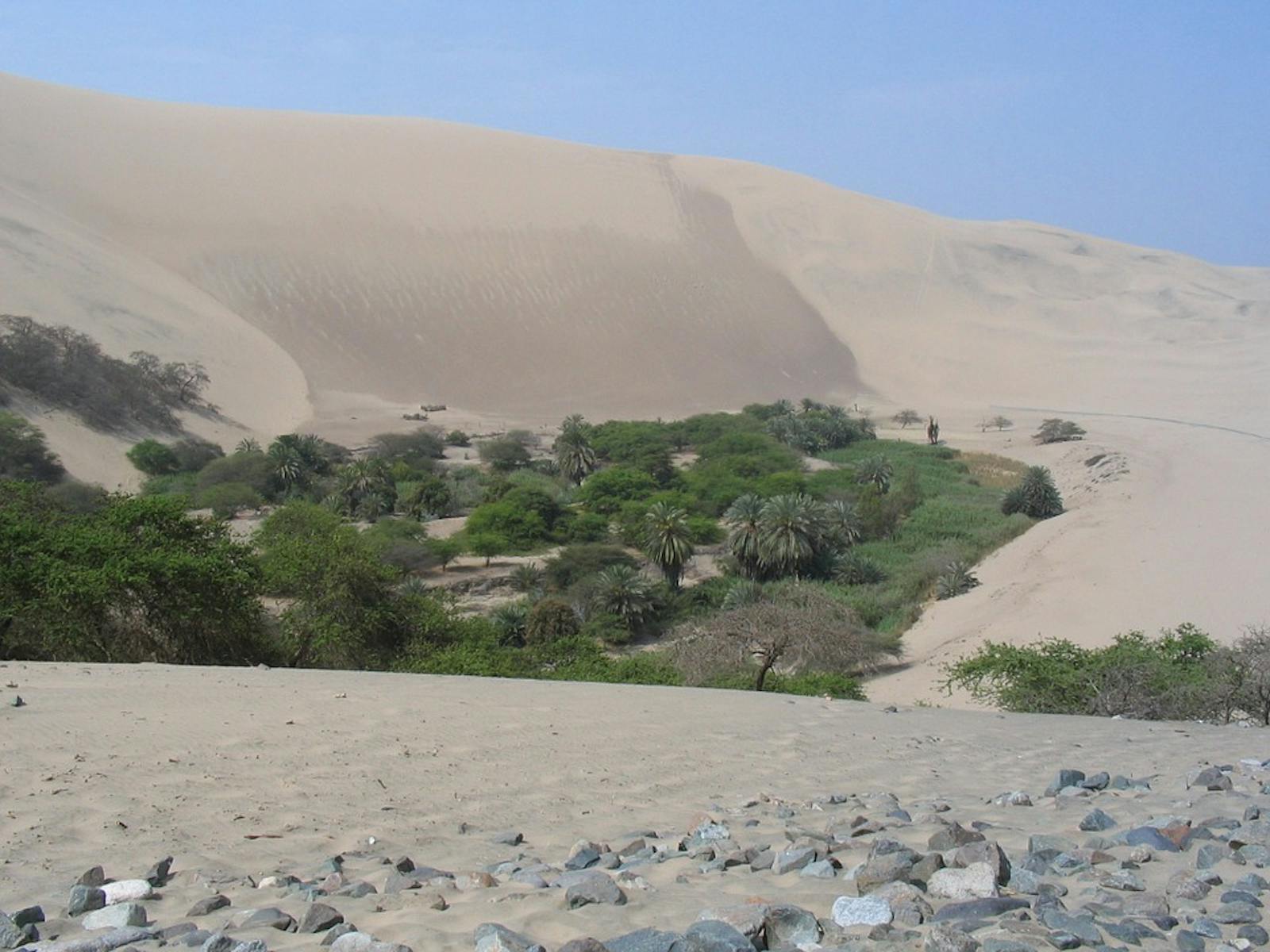Sechura Desert
The ecoregion’s land area is provided in units of 1,000 hectares. The conservation target is the Global Safety Net (GSN1) area for the given ecoregion. The protection level indicates the percentage of the GSN goal that is currently protected on a scale of 0-10. N/A means data is not available at this time.
Bioregion: South American Coastal Deserts (NT8)
Realm: Southern America
Ecoregion Size (1000 ha):
18,532
Ecoregion ID:
608
Conservation Target:
13%
Protection Level:
3
States: Peru, Chile
Along the coastal sand dunes of Peru, the Sechuran fox hunts for small rodents among the sparse shrubs. This arid habitat specialist has a very limited distribution throughout the Sechura Desert, the most expansive desert in South America. This canid species is considered Near Threatened due to habitat loss and illegal hunting and trade. An opportunistic omnivore, the Sechuran fox can also survive for long periods without access to surface water.
This ecoregion occupies the western subtropical portion of South America. It borders the Pacific Ocean on the west and extends between 20–100 km inland on the east until reaching the Andean secondary ridges. The ecoregion’s climate is warm in summer and wet in winter, with average annual temperatures of 22ºC. Fog created over the cold sea dissipates at elevations between 700–1,000 m. On the exposed hills and ridges facing the southwest, fog brings moisture to the desert and supports vegetation. In the low areas, precipitation reaches a maximum of 100 mm/year, while in the higher areas it reaches 200 mm/year.
This ecoregion is characterized by scant plant cover, although some areas experience a light cover of small annual herbs during periods of sustained mist, especially in El Niño years. Nonetheless, a significant variety of plant formations are distributed throughout the ecoregion. Toward the north, there is a predominance of carob trees and mesquite.
In the rest of the ecoregion, coastal mountains in different valleys are characterized by willows and Tessaria spp., evergreen, beach grasses, or species adapted to limited water availability. The hills too support various plant associations and species found nowhere else in the world. Coastal wetlands are also characteristic of this ecoregion, and near the first foothills of the western range there are some arid, rocky scrublands with abrupt reliefs where a variety of cactus grow.
.jpg)
The flagship species of the Sechura Desert ecoregion is the Sechuran fox. Image credit: Creative Commons
Despite the aridity of the area and relatively low species diversity, several species are found exclusively in the ecoregion. The endemic animals of the desert include several lizards—such as the Peru Pacific iguana and the coastal desert iguana—the gerbil leaf-eared mouse, many species of butterflies, and the endangered Peruvian plantcutter. Three of the coastal wetlands in this ecoregion are recognized as RAMSAR sites based on their international importance as habitat for migratory species. Some species in this ecoregion are endangered, including the critically endangered white-winged guan and the endangered russet-bellied spinetail. However, most of these are included within the range of one of the various protected areas that exist in this ecoregion.
Although this ecoregion corresponds to Peru’s most populated area, several protected areas exist, including the Cerros de Amotape National Park, San Fernando Reserved Zone and Paracas National Reserve. Continued management of these areas is required to ensure that each region’s conservation objectives are met. Additionally, there is still a need to protect important breeding areas for more than 80 bird species, including the endangered slender-billed finch.
A serious threat to the ecoregion is the expansion of urban areas, which are rapidly transforming and degrading the natural environment. The principal activities are agricultural, livestock, and mining operations, which threaten to pollute the water in the valleys and coastal wetlands. Livestock feed on carob groves in the north and on coastal hills, leading to overgrazing.
Most wetlands have also been reclaimed for agriculture. Two other major threats in this ecoregion include grazing of goats and wood extraction. Despite the network of protected areas in the ecoregion, there are still some gaps in protection, such as along the country’s coast.
The priority conservation actions for the next decade will be to: 1) extend protection of important natural areas; 2) restore wetland habitat for vulnerable species; and 3) reduce agricultural intensity on the landscape.
Citations
1. Brack A. 1988. Ecología de un País Complejo. Gran Geografía del Perú. Lima.
2. Rodríguez, L. 1996. Diversidad Biológica del Perú: Zonas Prioritarias para su Conservación. Proyecto Fanpe GTZ-INRENA.
3. INRENA. 2000. Perú-Areas Naturales Protegidas. Instituto Nacional de Recursos Naturales. Lima.



